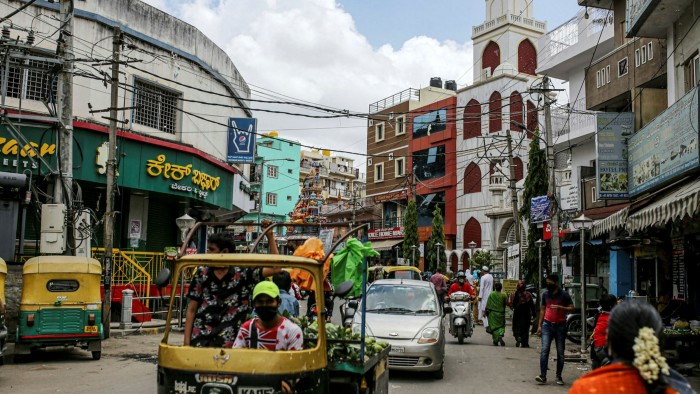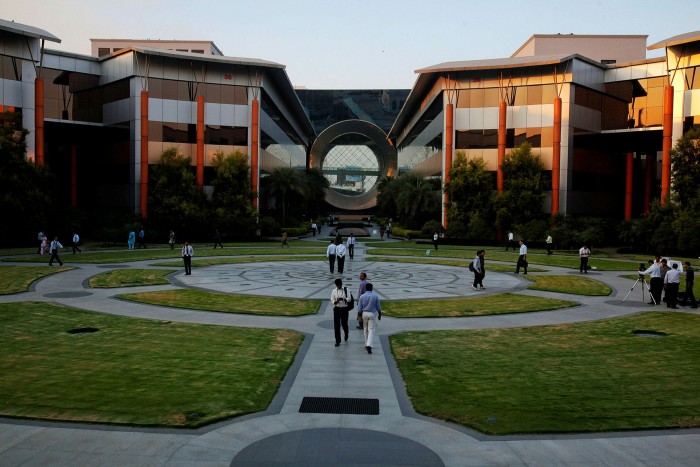Bangalore keeps its crown as India’s high-growth tech hub

Simply sign up to the Indian business & finance myFT Digest -- delivered directly to your inbox.
The southern Indian tech hub of Bangalore is home to the largest number of high-growth companies in India and ranks fourth overall among Asian cities, according to the FT’s latest ranking of High Growth Companies in Asia-Pacific, compiled by research company Statista.
Twenty of the top 500 companies on the list are based in Bangalore, representing four per cent of the total. India’s financial capital, Mumbai, is Bangalore’s nearest rival, with 13 companies in the top 500.
Bangalore has also retained its high growth crown despite having recently lost its title of India’s start-up capital. According to the government’s Economic Survey, 5,000 new start-ups were recognised in New Delhi between April 2019 and December 2021, compared with 4,514 in Bangalore.
But while the start-up scene is flourishing in India’s capital, New Delhi, the big money is still heading south. An analysis of Tracxn data by the Indian newspaper Mint shows that Bangalore nabbed $17bn in funding for start-ups during 2019-21, with New Delhi taking just $2bn.
Beyond start-ups, Bangalore’s state, Karnataka, is punching above its weight in attracting foreign direct investment (FDI). From October 2019 to December 2021, Karnataka captured $29bn in FDI equity inflows — India’s second biggest share after Mumbai’s state, Maharashtra.
“Bangalore offers [a] talent pool with diverse skill sets,” says Sanket Nayak, co-founder of Bangalore-based Digio, which offers services to digitalise paper-based processes and is ranked in the FT list this year as India’s third-fastest growing business. “When you look at people who are relocating back to India, they always choose Bangalore,” says Nayak, who cites two reasons: the weather and the opportunities in technology that the city offers.
Often referred to as India’s Silicon Valley, Bangalore’s tech foundations were laid by Indian IT companies, including Wipro and Infosys, the latter of which set up shop in Bangalore back in the early 1980s and has a campus to train recruits in Mysore, Karnataka.

Along with the graduates of local universities, such as the Indian Institute of Science, Bangalore’s programmers, developers and software designers working for back-office companies have provided a rich supply of tech workers. That appealed to start-ups, as well as established companies who wanted to build research and development centres.
However, Bangalore’s talent pool has not been big enough to feed India’s venture capital-fuelled start-up boom. Software companies have struggled to hire amid increased demand from businesses seeking to digitise during the pandemic. And that labour squeeze has boosted businesses such as Scaler, whose online courses to train tech workers are in high demand. The company is listed second among India’s high growth companies in the FT ranking.
More stories from this report
Abhimanyu Saxena, Scaler’s co-founder, says the company is “entirely digital” and “pretty global,” with offices as far away as Palo Alto. But, as Scaler gets bigger, it wants to secure the kind of skilled senior leaders found in Bangalore, and has headquartered in the city.
“The talent density is so high in Bangalore that it makes it hard for [senior leaders] to relocate anywhere,” Saxena says. “I know so many people working in Bangalore making at least $150,000 a year.”
Yet Nayak feels the city has become the victim of its own success. With notorious traffic problems and falling groundwater, “obviously the city was never meant to be this”.
While he praises the quality of life in Bangalore, Nayak has seen rapid urban development alter the city during the 21 years he has spent there.
“Bangalore used to be a retired person’s paradise like Florida,” he adds. But “today it’s just a concrete jungle. So yes, that’s the downside of the development.”
Comments